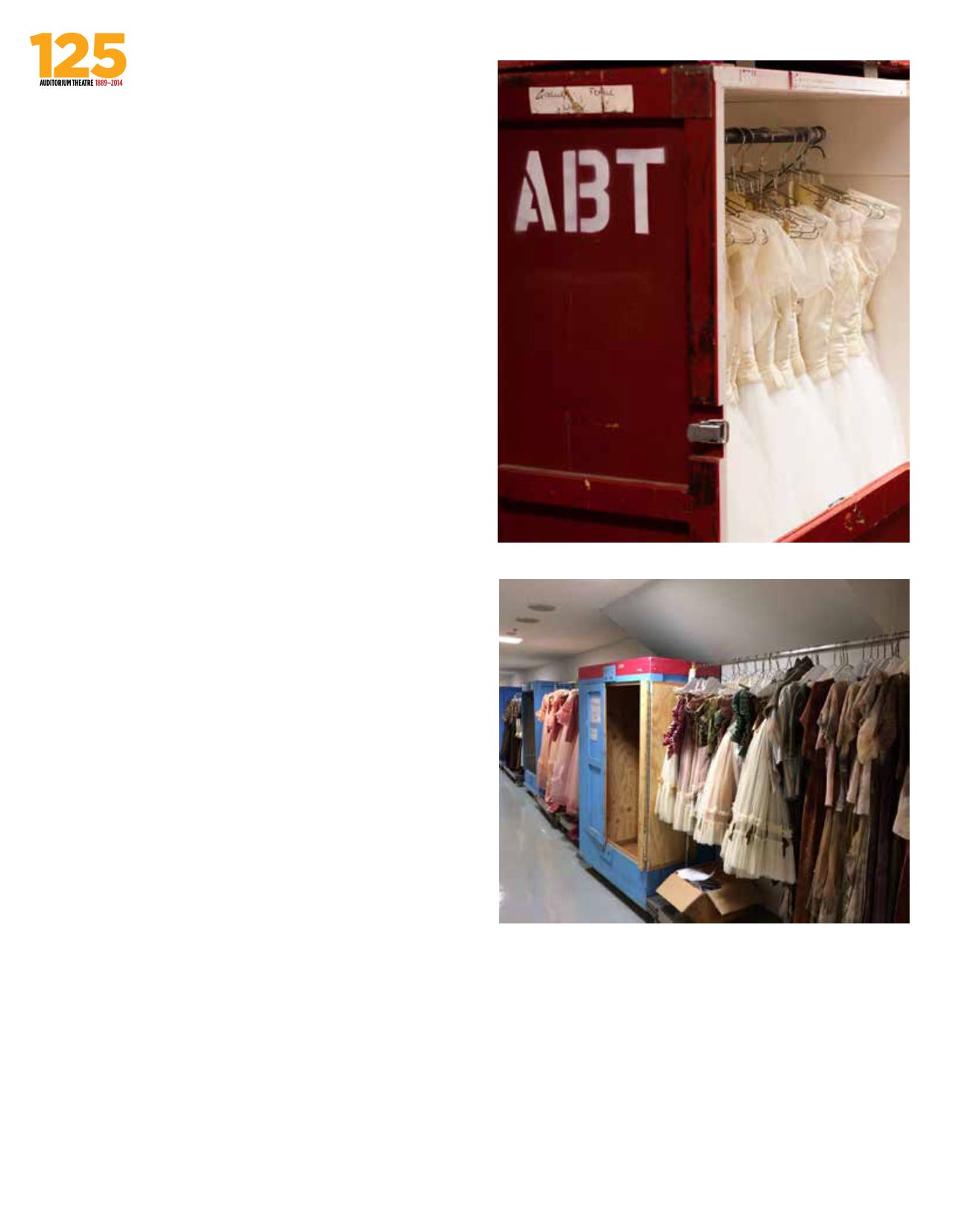
22 |
AUDITORIUM THEATRE 2014-2015
| OCTOBER 3 - OCTOBER 29
On the
Road
by Hannah Rubin
When American Ballet Theatre is in residence at Lincoln
Center’s Metropolitan Opera House for its annual 8-week
run, it can be hard to remember that the com- pany has
no theater of its own to call home. Despite its roster of
talent and lavish productions, ABT remains a touring
company at heart, packing up and hitting the road every
few months to take its ballets all over the world. In the
last year or two, the company has toured from Oman to
Japan, with stops in between, not to mention frequent
visits to Los Angeles, Washington DC and other U.S. cit-
ies. This September will take the company for the first
time to Australia. But putting elaborate story ballets on
the road re- quires more than packing some tutus. The
sheer logistics of an ABT tour can rival Ringling Brothers.
As dancers, stage managers and wardrobe supervisors
explain, touring has its own special hazards, as well as
undeniable rewards.
For James Whitehill, the company’s Production Direc-
tor, step one is moving the sets. For ABT’s recent Japan
tour, where the company presented The Nutcracker and
Manon as well as a mixed bill, the ballets’ scenery had to
be shipped 45 days in advance via ocean container in four
forty-foot high cubes. However, no matter how tightly the
cubes are packed, not everything can fit. For each in- ter-
national trip, a day or two in advance of the company’s
arrival, Whitehill also sends an air freight shipment often
weighing as much as 7000 pounds. It has essential items
like the dancers’ rehearsal wear and extra pointe shoes,
as well as critical production equipment that may not be
readily available at the destination, like lighting gels.
Whitehill travels with a team to mount the ballets.
Personnel includes a technical director, a lighting director,
three stage managers, three car- penters, three electri-
cians, two prop handlers, four wardrobe people and two
wig-and-makeup people. Depending on their destination,
the crew may be augmented locally, or the presenter may
bring in more personnel from farther afield. “The Middle
East doesn’t have a big local theatrical community, and
there’s not an experi- enced workforce to bring back-
stage and put to work,” says Whitehill. “When we were in
Oman, the sultan had just built the opera house, and they
hired a production coordinator from London who had
Royal Opera House experi- ence. In order to find enough
crew for back- stage, he had to bring people in from Aus-
tralia, London and Belgium.”
Building the sets can present challenges even when
experienced crew members are available lo- cally. “We
have a great team of translators in Japan,” Whitehill says.
“There may sometimes be tension between our crew and
the Japanese crew heads. The translators get caught in
the middle—they have a hard time translating what’s said
in such a way as to avoid offending either side.”
Moving costumes and shoes for 90 dancers around
Wilis costumes from Giselle on the move. Photo: Renata Pavam.
Manon costumes line the backstage hallway in Otsu, Japan.
Photo: Courtesy Japan Arts.


